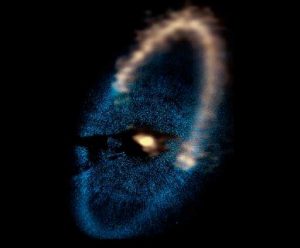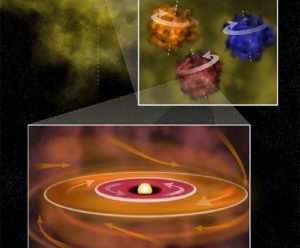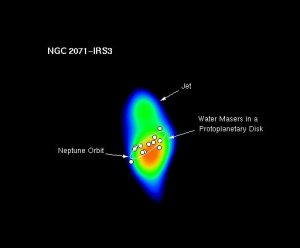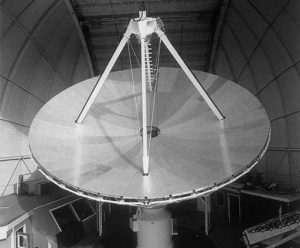A new observatory still under construction has given astronomers a major breakthrough in understanding a nearby planetary system that can provide valuable clues about how such systems form and evolve.
Planets Orbiting Star in Opposite Directions
Astronomers studying a disk of material circling a still-forming star inside our Galaxy have found a tantalizing result — the inner part of the disk is orbiting the protostar in the opposite direction from the outer part of the disk.
Smallest Solar System-like Disk Yet Found
The smallest protoplanetary disk ever seen rotating around a young star has been detected by an international team of astronomers using the National Science Foundation’s Very Large Array radio telescope.
Potential Planetary System Around Close Stellar Pair
Planets apparently can form in many more binary-star systems than previously thought, according to astronomers who used the National Science Foundation’s Very Large Array radio telescope to image protoplanetary disks around a close pair of stars.
Extrasolar Planet Hunt with Millimeter-wave Telescopes
Do nearby stars have planetary systems like our own? How do such systems evolve? How common are such systems? Proposed radio observatories operating at millimeter wavelengths could start answering these questions within the next 6-10 years, according to scientists at the National Radio Astronomy Observatory.










